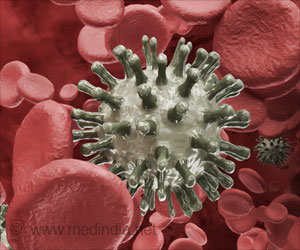in their systems. Although it doesn’t definitively establish a causal link between exposure to substances like
, it strongly suggests a potential connection that warrants further investigation (
).
The study revealed that, particularly for women, increased exposure to PFDE, an extended-chain PFAS compound, was associated with twice the likelihood of a previous
diagnosis. Women with higher exposure to two other extended-chain PFAS compounds, PFNA and PFUA, demonstrated nearly twice the odds of a prior melanoma diagnosis.
The research also established an association between PFNA and previous diagnoses of uterine cancer. Additionally, women with heightened exposure to phenols like BPA (commonly used in plastics) and 2,5-dichlorophenol (a chemical present in dyes and wastewater treatment by-products) exhibited increased odds of prior ovarian cancer diagnoses.
Advertisement
Conducted by experts from UC San Francisco (UCSF), University of Southern California (USC), and the University of Michigan, the study utilized data from blood and urine samples collected from over 10,000 individuals participating in the National Health and Nutrition Examination Survey (NHANES).
The investigation examined present exposure to phenols and PFAS in relation to prior cancer diagnoses, as well as explored disparities in these associations based on race/ethnicity.
The findings, published in the Journal of Exposure Science and Environmental Epidemiology, emphasize the importance of regarding PFAS and phenols as comprehensive categories of environmental risk factors for cancer among women, according to Max Aung, Ph.D., senior author of the study and former researcher at the UCSF Program on Reproductive Health and the Environment, now an associate professor of environmental health at USC Keck School of Medicine.
Forever Chemicals: The Never-Ending Saga of Cancer Risk
PFAS substances have pervaded the environment, contaminating water, food, and individuals via items like Teflon cookware, water-resistant clothing, stain-repellent textiles, and food containers. Termed “forever chemicals,” they resist degradation, persisting for decades in the environment, and remain in the human system for varying durations, ranging from months to years.
“These PFAS chemicals seem to disrupt hormonal function in women, potentially increasing the likelihood of hormone-related cancers in this demographic,” stated Amber Cathey, Ph.D., lead author of the study and a research faculty scientist at the University of Michigan, School of Public Health.
The study also brought to light racial disparities. Associations between different PFAS and ovarian and uterine cancers were exclusively observed in white women, while links between a PFAS known as MPAH and a phenol called BPF and breast cancer were solely observed in non-white women.
Safeguarding Health: Breaking the Chain of ‘Forever’ Chemicals
Researchers advocate for the Environmental Protection Agency (EPA) to regulate PFAS collectively as a group of chemicals, given their pervasive presence and potential health risks. This, they argue, would be more effective than addressing them one by one.
“Beat the risk, ditch the PFAS, and let health surpass”
Reference :
- Exploratory profiles of phenols, parabens, and per- and polyfluoroalkyl substances among NHANES study participants in association with previous cancer diagnoses – (https:www.nature.com/articles/s41370-023-00601-6.epdf)
Source: Medindia



